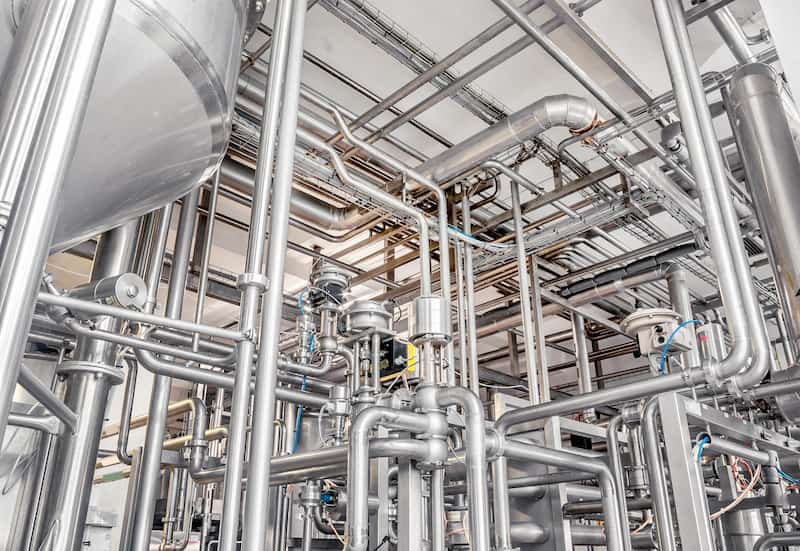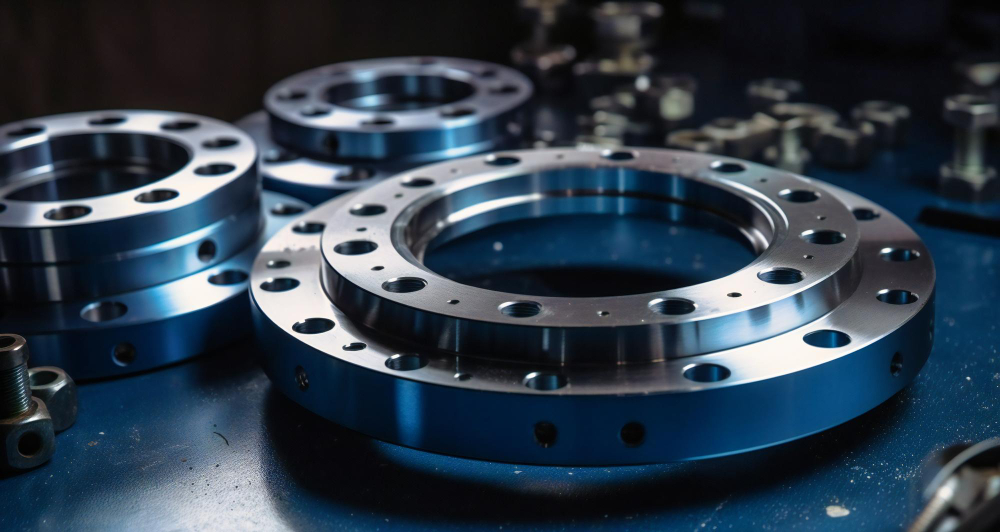
Properties Of Stainless Steel
Stainless Steel Mechanical Properties
Suppose you need clarification about what the examined properties below mean. In that case, you can look at our overview of material properties to see a more drawn-out clarification of each.
Yield strength
Depending upon the grade, stainless may show high strength and low stretching or low strength and high elongation properties. They compare very well with carbon steels when it comes to yield power.
Strength at high temperatures
Stainless steel performs similarly better compared to other carbon steels at higher temperatures. It shows better fire resistance because of its high strength retention factor at raised temperatures (above 500°C). It likewise has a preferable stiffness retention factor over carbon steel above 300°C.
Tensile strength
When it comes to elasticity, stainless steel is better than materials like aluminum, metal, and mild steel.
The highest tensile rigidity is in precipitation hardening and martensitic grades, and these grades can have twice as elastic qualities as the ubiquitous 304 and 316 grades. Duplex steel, specifically, has a high strength/ductility proportion.
Cryogenic resistance
Some stainless-steel grades are incredibly proficient at dealing with a more extensive scope of temperatures. Austenitic steels show uncommon durability and expanded elasticity at freezing temperatures. It broadens the extent of their utilization, impressively opening up new roads for current applications.
On the other hand, Ferrite, martensitic, and precipitation hardening grades are less excellent at cryogenic temperatures than their durability plunges with decreasing temperatures.
Ductility
The ductility of various stainless-steel grades is unique, and a few steps have high ductility permitting the utilization of complex, profound drawing processes.
Higher work hardening rate
This property alludes to a metal's ability to build its strength through cold working cycles. Stainless steels can be strengthened, and hard work to control their strength to the ideal level.
A similar grade can be utilized in different applications by varying its strength. For instance, an equivalent grade can be used as a spring or a flexible wire by strengthening and cold working.
Electric conductivity and magnetism
Like all metals, stainless steel conducts electricity. Nonetheless, this conductivity could be higher on account of all steels.
In industries where hygiene principles are high, or the electrical appliance might be exposed to harmful or moist conditions, stainless steel enclosures are utilized for protection.
Austenitic stainless steels are non-attractive; in any case, cold working can be utilized to prompt magnetic properties in specific grades. The wide range of various types shows magnetic properties.
Stainless Steel Chemical Properties
Chemical properties make this material extraordinary and give it its uniqueness.
High oxidation resistance
This distinctive property of stainless steel is liable for its numerous one-of-a-kind applications in the industry. High oxidation resistance is a consequence of chromium in stainless steel, and the level of chromium can increase to 26% in specific grades.
Other metals are safeguarded with coatings and anti-corrosion paints, but the corrosion starts when it wears off. On account of stainless steel, any removal of the natural layer of chromium oxide because of surface damage is followed by the formation of another coat on the uncovered surface that prevents corrosion deterioration.
Biologically inert
Stainless steel is biologically inert, making it a logical choice for clinical equipment, such as surgical devices, trauma screws, and plates. This property makes it an optimal metal for cutlery items and kitchen apparatuses.
Resistance to acids, bases, and organic materials
Stainless steel is resistant to many mixtures and acids, bases, and natural remedies—the protection from acids shifts for various grades. A few degrees can resist highly concentrated acids, while others may be resistant to low concentrations.
Similar non-reactivity is seen with fundamental mixtures and natural mixtures. It makes stainless steel a profoundly good material for use in chemical industries for storage, taking care of, and different processes.
Stainless steel likewise resists moisture, salt, sulphur, carbon dioxide, and chloride compounds effortlessly. It helps it survive in harsh environmental conditions more extended than most metals.
Stainless Steel Physical Properties
The justification behind picking stainless steel is ordinarily because of the benefits given by physical properties like corrosion resistance.
Notwithstanding corrosion resistance, the advantageous physical properties of stainless steel include the following:
• High and low-temperature resistance
• Simplicity of manufacture
• High Strength
• Stylish appeal
• Hygiene and simplicity of cleaning
• Long life cycle
• Recyclable
• Low magnetic permeability
Corrosion Resistance of Stainless Steel
Excellent corrosion resistance is an element of every single stainless steel. Low alloy grades can resist corrosion in ordinary circumstances. Higher compounds resist corrosion by most acids, alkaline solutions, and chloride conditions.
The corrosion resistance of stainless steel is because of its chromium content. Stainless steel contains at least 10.5% chromium—the chromium in the composite forms a self-mending defensive transparent oxide layer that forms immediately in the air. The self-healing nature of the oxide layer implies the corrosion resistance stays intact regardless of fabrication methods. Irrespective of whether the material surface is cut or damaged, it will help self-mend, and corrosion resistance will be maintained.
Highly Temperature Resistance
Few stainless-steel grades can resist scaling and gain strength at extremely high temperatures. Different grades keep up with high mechanical properties at cryogenic temperatures.
Straightforward Manufacture of Stainless Steel
Many grades of stainless steel can be cut, welded, framed, machined, and created using standard techniques and equipment for different kinds of steel.
High Strength
It can change Component plans and fabrication methods to exploit the work solidifying of stainless steel that happens when cold-worked. The resultant high qualities can permit the utilization of more slender material, prompting lower loads and expenses.
The remaining stainless steel can be heat treated to increase strength.
Aesthetic Appeal
Stainless steel can be provided with a scope of surface completions and can likewise be cleaned after creation to give the ideal completion. The completion of stainless steel is relatively easy to clean and maintain.
Stainless steel products have high luster, which makes it an optimal decision for uncovered surfaces. It arrives in a wide assortment of completions from bright to matt, and it might be brushed, engraved, embossed, and tinted for impact
Hygiene and Simplicity of Cleaning
Stainless steel is non-toxic and promptly cleaned. It makes stainless steel the material of choice for use in medical clinics, kitchens, and food, drink, and drug processing plants.
Long Life Cycle
Stainless steel's durability and corrosion resistance imply it will outlive many competing products. The low support qualities likewise make stainless steel the most minimal expense decision in a day-to-day existence cycle cost examination.
Recyclable
Stainless steel is completely recyclable. New stainless steel regularly contains between 50% and 80% reused material, and it can remove scrap stainless steel without degrading its value as a raw material.
The significant properties are not restricted to mechanical and chemical, as they were. Others in the rundown prove to be useful for different applications.
Recyclability
As mentioned previously, reusing stainless steel for making new products is possible. It decreases the stress on the climate for our steel needs by requiring fewer unrefined substances and diminishing waste formation.
Its non-biodegradable nature additionally keeps it from contaminating assets as it doesn't break down and saturate into soil or water reservoirs.
Easy to work with
Stainless steel is machinable and valuable, allowing an originator to make complex shapes and products. Stainless steel laser cutting, CNC machining services, twisting, and so on are accessible without unique equipment.
Cleanability
Stainless steel products are not difficult to clean with non-toxic household products like cleansers, detergents, soaps, or cleaning fluids, and this keeps them looking new for quite a while, expanding the service life.
It eventually decreases wastage and makes the underlying moderately expensive purchase worth the effort over the long term.
Related Articles
Brass Vs. Aluminium Camlocks: Choosing The Right Material For Your Application
Read MoreExploring the expansion of steel production in GCC and other emerging nations
Read MoreHow Structural Steel Helped The Majestic Architectures Around The World - Part 3
Read MoreHow Structural Steel Helped The Majestic Architectures Around The World - Part 2
Read MoreHow Structural Steel Helped The Majestic Architectures Around The World - Part 1
Read MoreAllowable & Galvanized Iron Pipe Fittings – Trusted Name For All The Pipe Fitting Needs
Read More


































































































































































